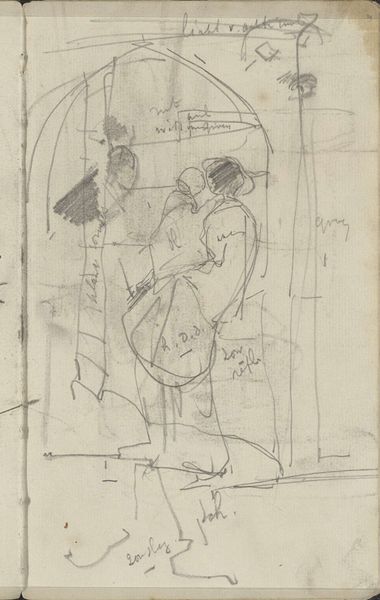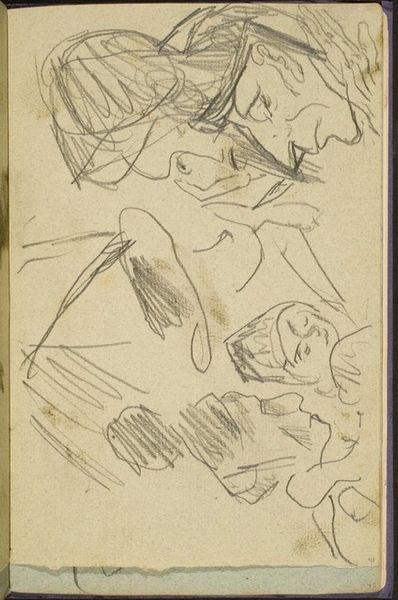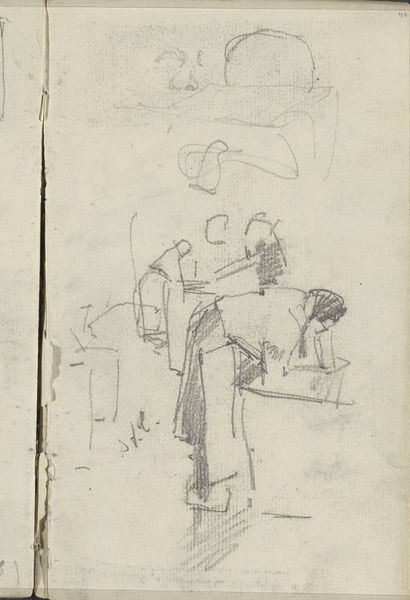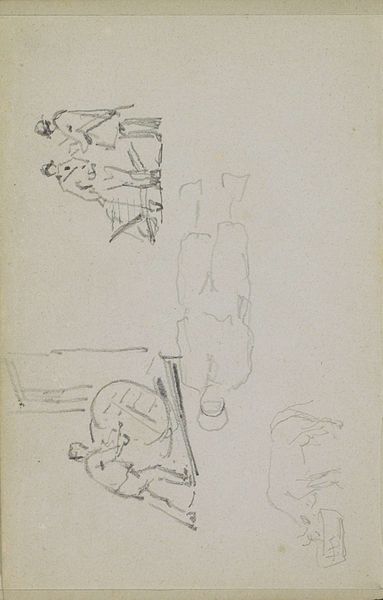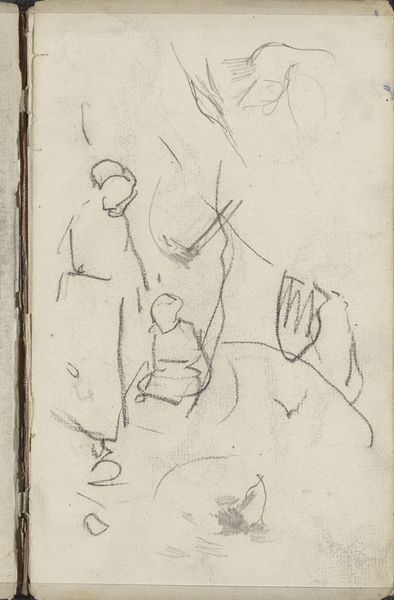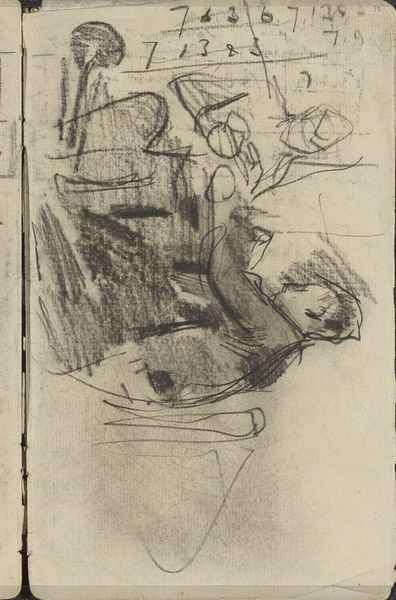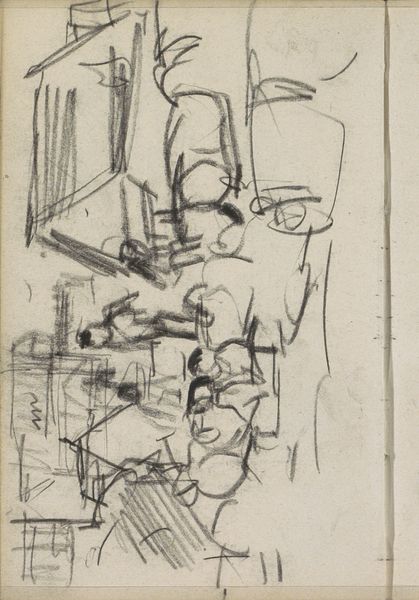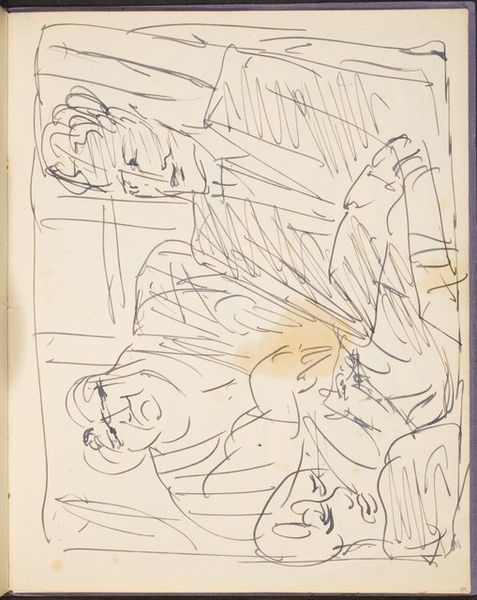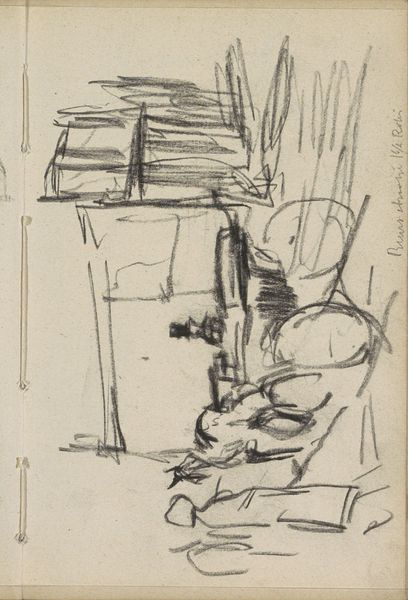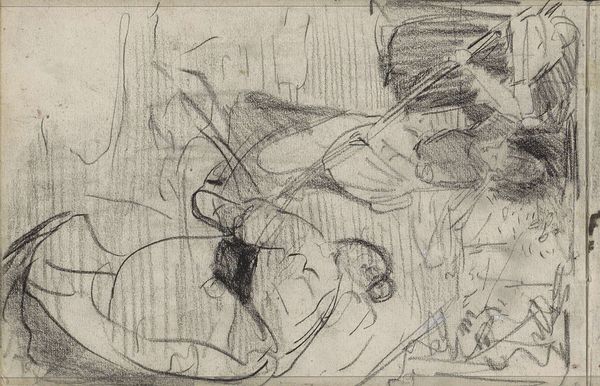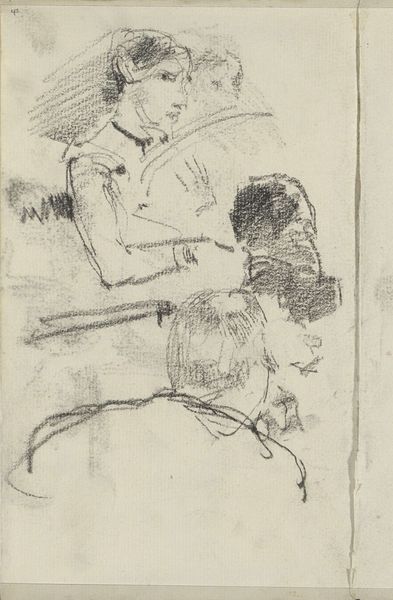
Copyright: Rijks Museum: Open Domain
Curator: Before us is a drawing by George Hendrik Breitner, titled "Four Women in the Street or on a Square," created sometime between 1886 and 1903 using graphite on paper. Editor: The energy here is striking, raw even. The quick strokes give it such a transient, almost fleeting quality. There's a sense of these women simply existing, being observed without interacting. It evokes a powerful stillness within a busy setting. Curator: Indeed. Breitner was fascinated with capturing everyday life, particularly in Amsterdam. This drawing seems to be an urban scene. It's impressionistic, prioritizing feeling and immediacy. The composition feels fragmented and deliberately unfixed. The symbols seem familiar, echoing other pieces of art created within this historical time-frame. Editor: Absolutely. And within the context of his era, it’s tempting to read into these women’s anonymous presentation. We don’t know anything about them – their social class, their desires, their daily lives. Their individual stories are subsumed into the broader experience of urban life, perhaps hinting at the limited opportunities afforded to women in that era. Their position is quite literally drawn. Curator: Perhaps Breitner’s intention wasn’t to fully reveal them as individuals. But what about considering his choices? It is less about unveiling identities and more about conveying the pulse of the city, how it feels to observe a collective existence. What do you think that says about public versus private spaces in Dutch culture? The lines, they imply a more extensive picture. Editor: I think there's truth to that. But that’s part of its power. It refuses to settle on a singular meaning, inviting reflection on these social dynamics, how they are perceived. And also the means in which the subjects engage with this perception. The composition keeps them deliberately off-balance. This evokes the alienation that the subject likely experiences within public spaces. Curator: The drawing evokes these spaces, absolutely. It reveals our desire to distill meaning from very ordinary things and figures. There are figures presented outside of boxes or clear windows, creating meaning through what we understand about form itself. I’m really struck by its delicate, almost tentative quality. Editor: I concur; there is a delicacy in the piece that causes pause. Looking at the work overall, the deliberate sketchiness underscores the ephemeral nature of a city encounter. Curator: And there you have it; "Four Women in the Street or on a Square," capturing a brief glimpse of a time and place. Editor: An intersection of the mundane and meaningful that leaves us contemplating more than meets the eye.
Comments
No comments
Be the first to comment and join the conversation on the ultimate creative platform.
